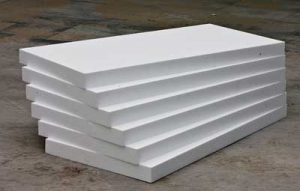While providing the ideal insulation for wooden houses in Scandinavia, the issue of controlling heating costs has to be taken into account. Two companies have already jointly conceived a solution based on polyurethane rigid foam.
Two wooden beams with cross sections of 98 by 47 mm and 40 by 47 mm were placed in a mold and the gap between the two beams was filled with a liquid polyurethane system solution. The mold was then sealed. and cured at a temperature of about 45ºC. After a short period of time, the finished polyurethane mullions can be removed from the molds. The stability of the mixture is ensured by the fact that the polyurethane system adheres very well to the underside of the wood.
This technology prevents the creation of thermal bridges between the internal space and the surface. Thus, the insulation solution is greatly improved. The Norwegian Intellectual Property Office has confirmed in writing that it will grant a patent for the invention of this technology.
There are parts of the building envelope where relatively dense heat flow and low internal surface temperatures are formed by the temperature difference between the interior and exterior of the building. These parts become more heat transfer bridges, so-called thermal bridges. Sometimes can also be called cold bridges.
Thermal bridge is often due to the part of the heat transfer coefficient being much larger than the adjacent parts, insulation performance is much worse, in the envelope structure, which is a very common phenomenon. In the cold season, the heat dissipation area of the corner of the exterior wall is larger than the heat absorption area, and the airflow in the corner is slower and receives less indoor heat than the adjacent flat part. It is also a thermal bridge part with intensive heat flow and low internal surface temperature.
Due to the low temperature of the inner surface of the thermal bridge part, during winter, when the temperature there is lower than the dew point temperature, water vapor will condense on its surface and form condensation. Thereafter, the dust in the air is easy to stain, and gradually become black, thus growing bacteria and mold. Serious parts of the thermal bridge, in the cold winter, will even trickle water, a great impact on life and health.
Strengthening insulation is an effective way to deal with thermal bridges. The use of external wall insulation can improve the temperature of the inner surface of the external wall, but the thermal bridge between the external wall and the partition wall, external wall and the floor and other connections are more obvious. The better the internal insulation, the greater the proportion of heat loss through the thermal bridge. The use of external insulation is beneficial to avoid thermal bridges because the insulation layer covers the entire exterior wall surface.
The application of polyurethane rigid foam is a good solution to the above problems.

